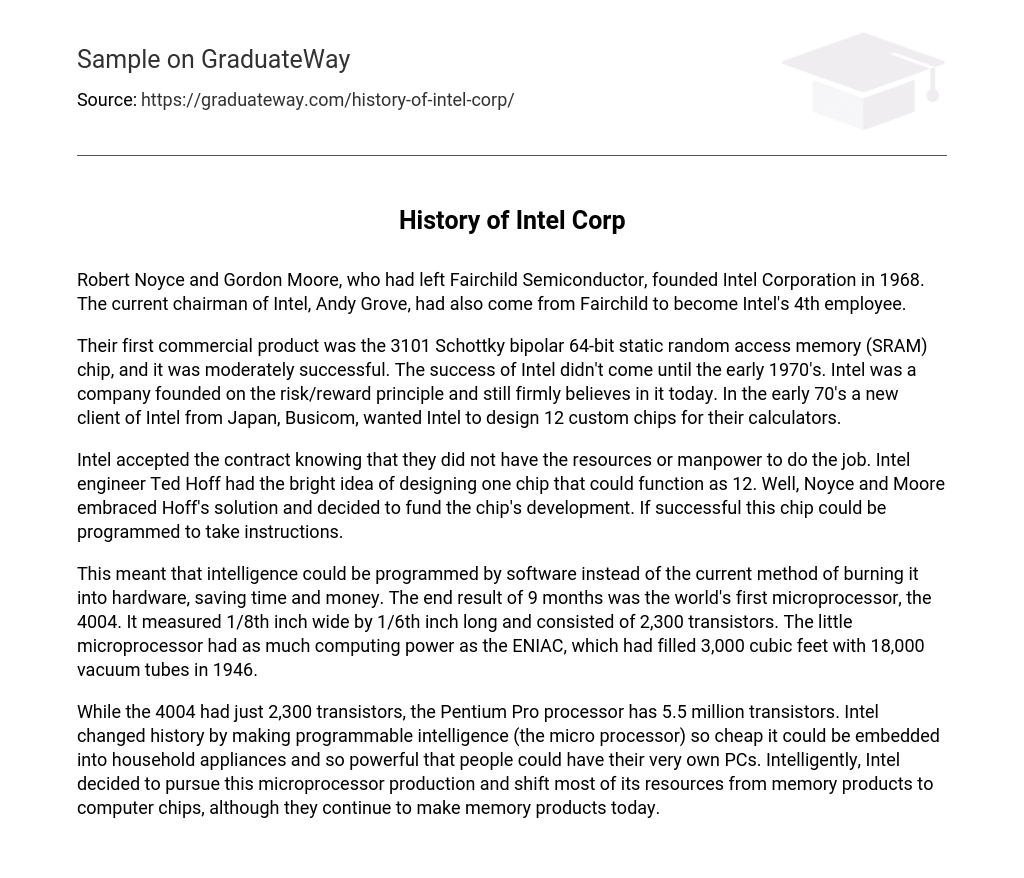Robert Noyce and Gordon Moore, who had left Fairchild Semiconductor, founded Intel Corporation in 1968. The current chairman of Intel, Andy Grove, had also come from Fairchild to become Intel’s 4th employee.
Their first commercial product was the 3101 Schottky bipolar 64-bit static random access memory (SRAM) chip, and it was moderately successful. The success of Intel didn’t come until the early 1970’s. Intel was a company founded on the risk/reward principle and still firmly believes in it today. In the early 70’s a new client of Intel from Japan, Busicom, wanted Intel to design 12 custom chips for their calculators.
Intel accepted the contract knowing that they did not have the resources or manpower to do the job. Intel engineer Ted Hoff had the bright idea of designing one chip that could function as 12. Well, Noyce and Moore embraced Hoff’s solution and decided to fund the chip’s development. If successful this chip could be programmed to take instructions.
This meant that intelligence could be programmed by software instead of the current method of burning it into hardware, saving time and money. The end result of 9 months was the world’s first microprocessor, the 4004. It measured 1/8th inch wide by 1/6th inch long and consisted of 2,300 transistors. The little microprocessor had as much computing power as the ENIAC, which had filled 3,000 cubic feet with 18,000 vacuum tubes in 1946.
While the 4004 had just 2,300 transistors, the Pentium Pro processor has 5.5 million transistors. Intel changed history by making programmable intelligence (the micro processor) so cheap it could be embedded into household appliances and so powerful that people could have their very own PCs. Intelligently, Intel decided to pursue this microprocessor production and shift most of its resources from memory products to computer chips, although they continue to make memory products today.





